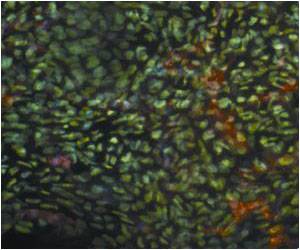
The surface is covered with tiny pits, which the researchers said made it more effective in allowing stem cells to grow and spread into useful cells for therapy.
Currently, when adult stem cells are harvested from a patient, they are then cultured in a laboratory to increase the quantities of cells and create a batch of sufficient volume to kick-start the process of cellular regeneration.
At this point they can be reintroduced back into the patient.
It is hoped the discovery could lead to the creation of stem cell therapies for re-growing bone and tissue, and also for conditions such as arthritis.
Dr Matthew Dalby, from the University of Glasgow, led the research alongside colleague Dr Nikolaj Gadegaard and Prof Richard Oreffo of the University of Southampton.
Advertisement
"If the same process can be used to culture other types of stem cells too - and this research is under way in our labs - our technology could be the first step on the road to developing large-scale stem cell culture factories, which would allow for the creation of a wide range of therapies for many common diseases such as diabetes, arthritis, Alzheimer's disease and Parkinson's disease," he said.
Advertisement
"It is important to realise the ability to retain skeletal stem cell phenotype using surface topography offers a step change in current approaches for stem cell biology," Oreffo said.
"The implications for research and future interventions for patients with arthritis and other musculoskeletal diseases are substantial," he stated.
The paper, Nanoscale surfaces for the long-term maintenance of mesenchymalstem cell phenotype and multipotency, was published in the journal Nature Materials.
Source-ANI









